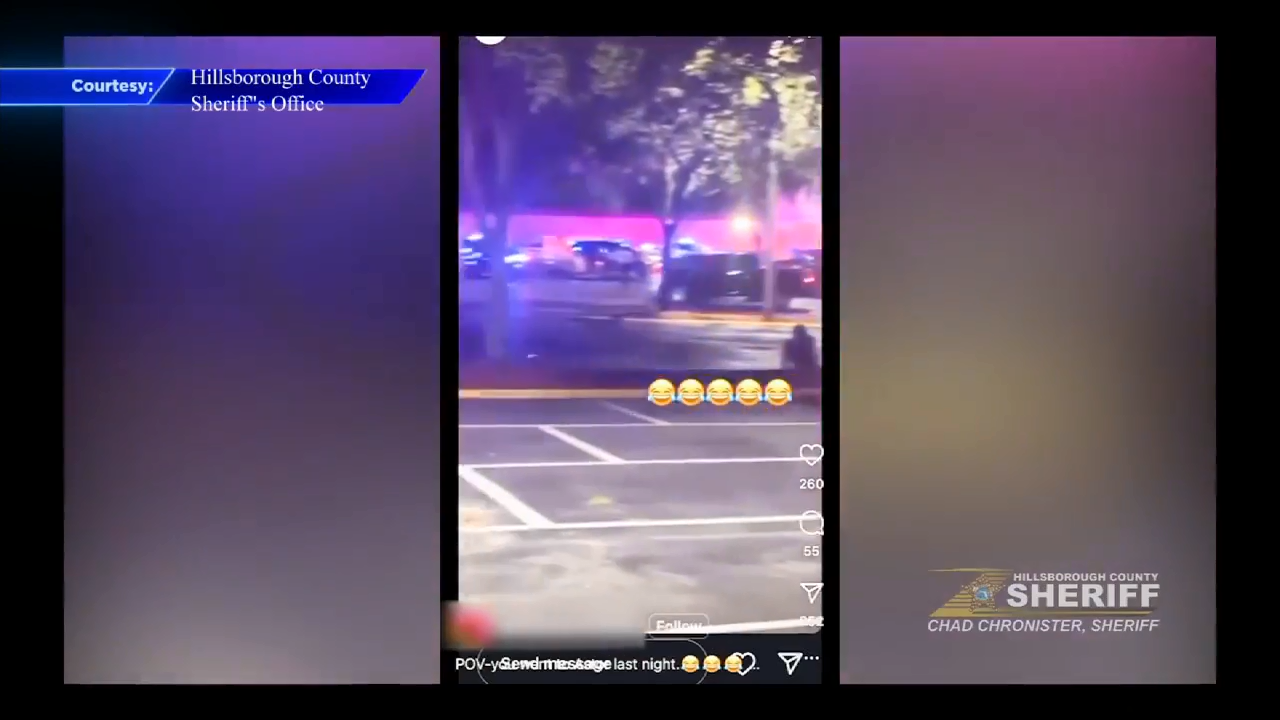Oklahoma
It’s been nearly 10 years since lawmakers last addressed civil asset forfeiture. Gov. Stitt has asked for change
It’s been tried before.
Almost a decade ago, a Republican state lawmaker partnered with the Oklahoma branch of the American Civil Liberties Union and the Oklahoma Council of Public Affairs to try and reform the state’s civil asset forfeiture system.
They didn’t get far.
County sheriffs and the state’s district attorneys pushed back against the idea. And though one bill — limited in scope — became law in 2016, not much has been done since then.
Fast-forward to this week. Reforming the civil asset forfeiture system is back on the table after Gov. Kevin Stitt challenged state lawmakers to make changes during his State of the State speech.
“We need to address civil asset forfeiture,” the governor said Monday. “It’s crazy to me that somebody can be pulled over and have their cash and truck taken for an alleged crime, get acquitted of that crime, but they still never get their property back. That isn’t fair and we need to make sure it isn’t happening anywhere in Oklahoma.”
Oklahoma lawmakers say they’re unclear on details of any new plan to change civil asset forfeiture
Stitt’s call to change the system caught many state lawmakers off guard.
Speaking at a news conference after the governor’s speech Monday, Senate Pro Tempore Greg Treat said he was surprised Stitt raised the subject. “That’s an issue that former Sen. Kyle Loveless talked about a lot when he was here,” Treat said. “I remember the blowback that he received from law enforcement, so I actually was trying to look at (Public Safety Commissioner Tim) Tipton to see what his reaction was.”
But Treat, R-Oklahoma City, said those residents who had assets seized and were later not found guilty should have those assets returned.
More: His son was critically injured during a traffic stop. It’s changed Senate Pro Tempore Greg Treat’s legislative goals
“The way we do that, the way we go about it, it’s a very complicated process,” he said. “The governor, there’s just a lot of issues that he brought up today, issues that we as the Senate have not talked to the governor (about). I don’t know any details about what he’s trying to accomplish. I don’t know all the ins and outs.”
But Treat said that, philosophically, the government should be required to have “a very good case against someone” and prove guilt in order to take away property.
“But I’m not well versed on this, so I’m gonna have to educate myself,” he said.
Last move to change Oklahoma’s procedures for asset forfeiture nearly 10 years ago
Records released by the ACLU of Oklahoma in 2015 showed at that time, over a five-year period, law enforcement officials in 12 Oklahoma counties seized more than $6 million in cash, almost $4 million of which was taken without any criminal charges. In addition, of the $6.1 million dollars taken, only $2.1 million was seized from people who were actually charged with a crime.
According to the ACLU’s report, Canadian county law enforcement officials took $2,733,956.88 in cash in 44 seizure cases. However, of those 44 cases, court records show that criminal charges were only filed in 23.
In 2016, then-Gov. Mary Fallin, a Republican, signed a bill that gave judges the authority to award attorney fees to people whose assets were unjustly seized by law enforcement. Since, then, however, efforts to change the forfeiture process have been dormant.On Monday, Loveless, the former senator from Oklahoma City, said he applauded Stitt’s calls for changes to the system, but added that the governor and reform supporters would have difficulty getting a bill through both houses of the Legislature this year.
“I appreciate that he raised the subject,” Loveless said. “But I think it would be hard to get done.”
Loveless isn’t the only one. State Rep. Justin Humphrey, chair of the House’s Criminal Justice and Corrections Committee, said he doubted too many lawmakers wanted to tangle with the District Attorneys Council during an election year.
“There’s a conversation to be had about it, but it’s hard to get things moving up here,” Humphrey, R-Lane, said. “The problem is that the DAs Council has had a very tight hold on things up here. I support the DAs 1,000 percent but I’ve also disagreed with them.”
In 2015, the state’s district attorneys waged a session-long fight to defeat the reform measure. At that time they said forfeiture is necessary to combat drug trafficking and that abuses of the system were rare. Cleveland County DA Greg Mashburn told Oklahoma Watch in 2015 that Loveless “was hyping the issue and using scare tactics to push his bill.”
“I’m very concerned that’s the line he’s taking in that,” said Mashburn in the article. Mashburn, both then and now, represents Cleveland, Garvin and McClain counties and sits on the commission overseeing the Oklahoma State Bureau of Narcotics and Dangerous Drugs. In 2015 he said civil forfeiture “may be something we need to address at our next quarterly (commission) meeting, just to stay on top of it, because it’s going to be an issue that we need to address and educate people on. They’re telling scary stories on the other side, and it’s just not accurate.”
The Oklahoman made numerous requests for comments from the state’s District Attorneys Council about its opposition to changes in the forfeiture system but did not receive a response.
House Democrats call changing civil asset forfeiture ‘a bipartisan issue’
While the Republican-controlled Legislature may be hesitant to embrace the governor’s call, Democrats in the House of Representatives said they agree with Stitt.
“It’s a bipartisan issue,” state Rep. Mickey Dollens, D-Oklahoma City, said. “We haven’t whipped a vote in the caucus, but Democrats are supportive of changes. It all comes down to fairness.”
Still, even though no legislation has been filed to date, Humphrey predicted the discussion about the issue over civil asset forfeiture would continue. “People are gonna keep talking about it,” he said. “The governor raised the issue and there will be discussions about it this year.”

Oklahoma
Oklahoma has a teen vaping problem. It’s time to hold the adults who sell to them accountable

Oklahoma has a teen vaping problem. More than 20% of Oklahoma high school students report using e-cigarettes in the last 30 days, compared to 10% of teens nationally. That’s not acceptable. Oklahoma’s children deserve better than a lifetime of addiction to nicotine and the health consequences that come with that.
Last year, the Legislature passed a measure to hold youth accountable when they’re caught purchasing, using or possessing tobacco or vape products. The law calls for an educational course, and then fines if the course is not completed.
It’s time to hold the adults accountable, too. Current law fines the clerk behind the counter for selling to minors but levies no fine against store owners. That should change. Store owners are responsible for training their employees and responsible for what happens in their stores.
This year I authored House Bill 3331 with Sen. Jo Anna Dossett. The bill, which is being considered by the Legislature, would add fines for stores owners in addition to the current fines on clerks. The fines would begin at $250 for the first offense and escalate to $1,000 for the third and subsequent offenses. Repeat offenders could also lose their license to sell tobacco products.
More: Oklahoma ranked No. 3 state for most e-cigarette use, has most residents who vape daily
Vape aerosols contain addictive nicotine and other substances which can lead to irreversible disease and lung damage. The toxic aerosol contains cancer-causing substances, as well as heavy metals like lead and nickel. Nicotine exposure under the age of 25 can damage the developing brain, impacting memory, attention and learning.
Almost 9 out of 10 adults who smoke cigarettes daily say they started before they were 18, so preventing youth from starting is key to tobacco prevention efforts. Flavorful vapes with color packaging and high concentrations of nicotine are Big Tobacco’s way of hooking the next generation of users.
To help store owners, the Oklahoma State Department of Health provides free resources to tobacco retailers and training for employees through their Validate program, all of which is available at ValidateOK.com.
With free training in place, there’s no excuse for any store or employee to sell tobacco or vapes to underage individuals. Still, kids are getting these products from adults, and the adults should be held accountable.
HB 3331 is a step in the right direction. It’s a measure that will protect Oklahoma’s youth from the predatory marketing of Big Tobacco and set our state on a course for better health outcomes in years to come.
Rep. Cynthia Roe is a member of the Oklahoma House of Representatives for Oklahoma’s 42nd District.
Oklahoma
Oklahoma National Guard breaks ground on new museum
Oklahoma
OKC uses Ward 4 as a dumping ground. Here’s a 180° mitigation concept for the new Oklahoma County jail

As a resident of Ward 4 in Oklahoma City and as a professional land planner, I am offering a site-planning solution that can be part of mitigating the impact of the proposed detention center (jail) on Del City, on neighborhoods in Oklahoma City, and on Ward 4 in general. The SP-588 will be heard by the city council on May 21.
Gist: My proposed “180° Mitigation Treatment” first and foremost controls where detainees can be released by having a key part of the detention center campus turned 180°, having a buffer area along Grand Boulevard, and Oklahoma City closing/fencing SE 22 Street near the SP-588 southern jail entrance.
I have prepared and attached an unpolished handmade concept graphic of the “180° Mitigation Treatment” that modifies exactly what was shown at the Oklahoma City Planning Commission.
The proposed SP-588 jail location and design are just the latest example of the city of Oklahoma City’s pattern and practice of dumping unwanted and undesirable land uses into the edge area of Ward 4, where I have resided over 40 years. Some examples are an asphalt batch plant, car crushing plant, the huge Bryant landfill and more. SP-588 also unacceptably left the western 1/3 of the site vacant for future jail large-scale expansion. There appears to be no legal way to guarantee that detainees would be transported downtown for release, so an urban planning design solution can be the answer.
The proposed design mitigation solution is the “180° Mitigation Treatment” I developed and first transmitted in April to elected officials with Oklahoma City, Del City and the county commissioners.
Opinion: Mid-Del School Board member: There aren’t resources to support the jail at the proposed site.
Del Cityans have a valid set of realistic security, property value and other concerns about the county jail/detention facility being a block from Del City. My preference would be to have the new jail somehow be in the downtown OKC area or part downtown, part outside. However it seems destined to be entirely located at Grand Boulevard.
The rotating of the public parking area, public access and offices/staff-areas by 180° to the west of the jail cell “pods” means the east area is proposed to be replaced by more than a 200-foot-deep green buffer space and an attractively designed concrete wall like those along some highways, both visible along Grand Boulevard. This site plan solution would hide the planned 12-foot-tall Grand Boulevard side’s ugly chain link fence (topped by looping razor wire) behind a wall.
That way, when looked at from the east, the buffer green space and wall keep the jail out of sight, out of mind to youth of all ages. This “180° plan” makes it to where any person released from the jail would have to walk over a half mile to Eastern Avenue, then figure out how to walk over a mile to enter Del City or any other Oklahoma City neighborhood. It is highly unlikely the released detainees would want to walk so far.
This 180° plan recommends various cooperative negotiated agreements to help other fund mitigation measures for the benefit of the impacted city of Del City to be part of the solution for all parties.
More: Del City residents fear a loss of their way of life if a jail is built nearby
Finally, I have been acquainted with and affected by this site for over 50 years now, as I grew up just inside Del City, hiked the site as a boy when it was still an old growth dense woodland, watched as that was chopped down and replaced with a massive public housing project (Hamilton Courts), and went to junior high with kids from there. All that is part of why I became an urban planner, so I want to help.
Larry Hopper is a certified planner and former principal planner and planning manager for the city of Oklahoma City Public Transportation and Parking Department.
-

 News1 week ago
News1 week agoSkeletal remains found almost 40 years ago identified as woman who disappeared in 1968
-

 Movie Reviews1 week ago
Movie Reviews1 week ago“Kingdom of the Planet of the Apes”: Disney's New Kingdom is Far From Magical (Movie Review)
-

 World1 week ago
World1 week agoIndia Lok Sabha election 2024 Phase 4: Who votes and what’s at stake?
-

 World1 week ago
World1 week agoUkraine’s military chief admits ‘difficult situation’ in Kharkiv region
-

 World1 week ago
World1 week agoCatalans vote in crucial regional election for the separatist movement
-

 Movie Reviews1 week ago
Movie Reviews1 week agoAavesham Movie Review
-

 Politics1 week ago
Politics1 week agoNorth Dakota gov, former presidential candidate Doug Burgum front and center at Trump New Jersey rally
-

 News1 week ago
News1 week agoTrump, Reciting Songs And Praising Cannibals, Draws Yawns And Raises Eyebrows



















